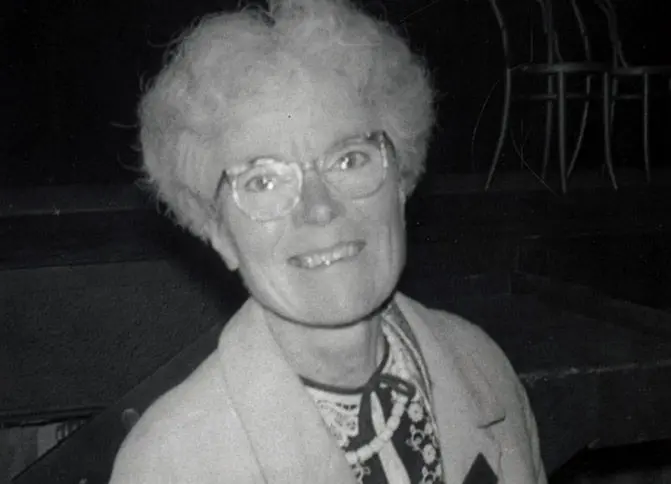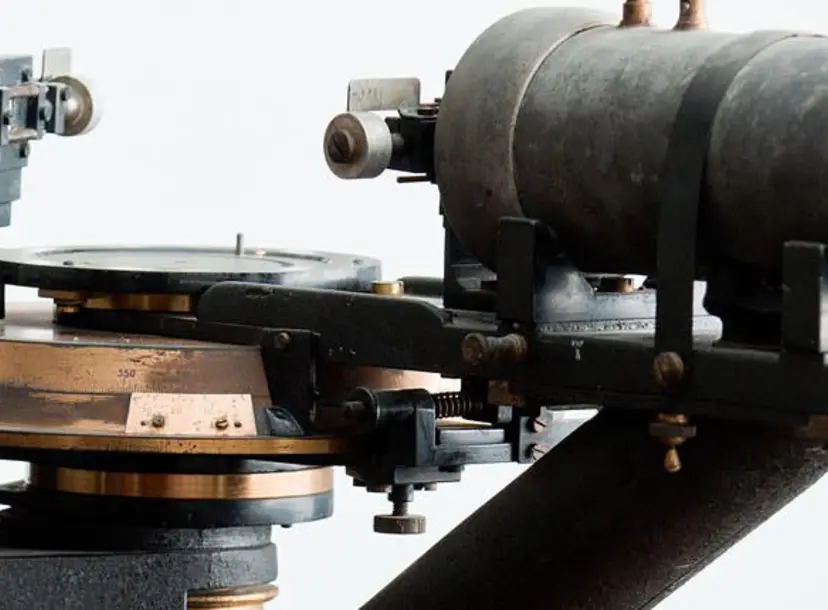Kathleen Lonsdale (1903–1971)

Accomplishments
Kathleen Lonsdale, née Yardley, has the distinction of being the first woman to be elected a Fellow of the Royal Society when in 1945 it was decided that the term Fellow could encompass women. Furthermore, she was also the first women President of the British Association.
Her major scientific work was in X-ray crystallography especially on the theory of space groups to help determine where possibilities of molecular symmetry might occur and in demonstrating for the first time that the benzene ring was hexagonal and planar and calculating its precise dimensions.
Early life
Yardley was born in Newbridge, Co. Kildare, the last of ten children of a Baptist family. Because of the political situation in Ireland, the family moved to Ilford in Essex in 1908. She initially attended a girl’s school, but because of her aptitude and interest in mathematics she transferred to Ilford County High School for Boys.
In 1919, although there were reservations about admitting someone at such a young age, she enrolled at the University of London’s Bedford College for women in Regent’s Park. Although she initially studied mathematics, she later changed to physics and in 1922 graduated with reportedly the best degree that year.
One of her examiners was the Professor of Physics at University College London, William Henry Bragg (1862–1942) who then took her into his X-ray crystallography group. The following year Bragg was appointed Director of the Davy-Faraday Research Laboratory at the Royal Institution and she moved there with him.
Work at the Ri
Yardley worked for two periods at the Royal Institution, the first ended in 1927 when she married Thomas Lonsdale who worked in Leeds (he offered to do her soldering on one occasion which was a novel, but in her case effective, courtship practice) and with whom she had three children.
Lonsdale obtained a position in Leeds University where she remained until 1930 when they returned to London and she resumed working at the Royal Institution. Following Bragg’s death and the appointment of Henry Dale (1875-1968) as Director of the Davy-Faraday Research Laboratory, Lonsdale de facto led research at the Royal Institution. Since Dale was already President of the Royal Society, scientific adviser to the war cabinet and a member of the Tube Alloys committee his time was already fully occupied.
In 1946 Dale was replaced at the Royal Institution by Eric Rideal (1890-1974) and Lonsdale moved University College London where she established its crystallography department and rose to be the first woman professor of chemistry there.
Anti-war movement and imprisonment
In 1935 she and her husband became Quakers, and this became an increasingly significant strand in her life, as she served as an officer in a number of meetings. More particularly she became completely committed to the Quaker anti-war movement for the rest of her life.
Although she fully appreciated the evils of Fascism (working with many scientific colleagues who had fled the Third Reich and elsewhere), and did not have any practical alternative to dealing with its aggression, yet she refused to have anything to do with the war of 1939 to 1945.
This went so far as to refuse to register for Civil Defence work, for which she spent a month in Holloway Jail in 1943, an experience to turned her attention to that other great Quaker cause of penal reform. Prison also, she later wrote, prepared her for any future social occasion, including meeting HM the Queen, who created her a Dame in 1956.
A woman in science
Lonsdale, unlike many women trained in science in the inter-war years who encountered severe difficulties in building a career, was fortunate in finding in Bragg a mentor who actively promoted women in science.
It is striking how high a proportion of those working in X-ray crystallography were women compared with most other areas of science (biochemistry is the only other comparable science in this regard at the time). Lonsdale was thus able to use her immense abilities to the fullest possible extent and thus provide an example of career and knowledge construction at a time when opportunities even for talented women were few.
She addressed the general issues raised by her career in a Friday Evening Discourse called 'Women in Science' which she gave in 1970.
This blog was first published in January 2014, but was updated in November 2022.
